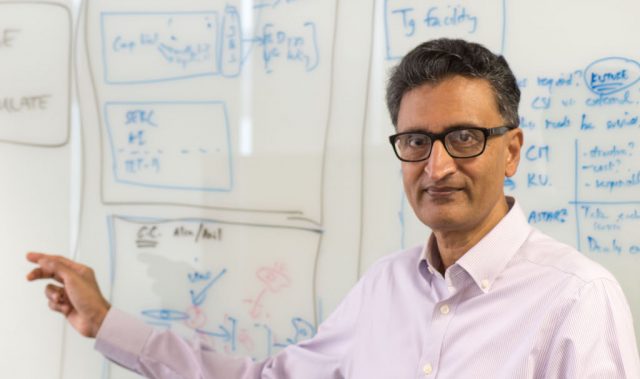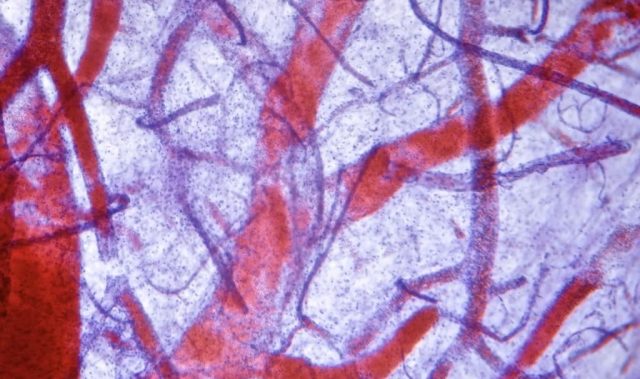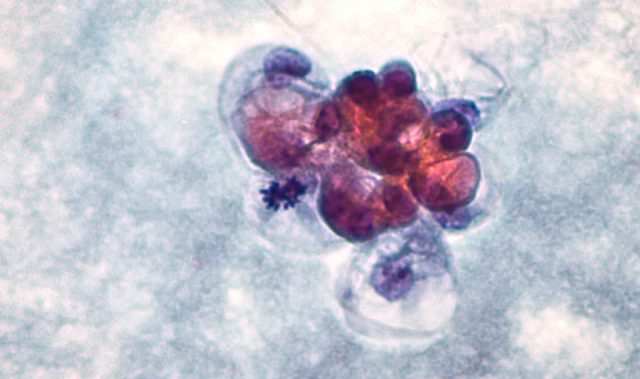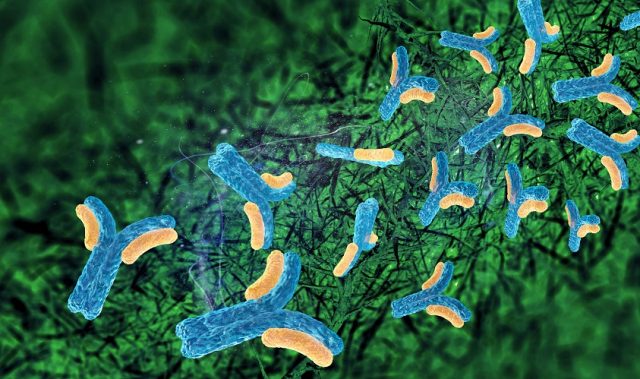
AsianScientist (Jul. 22, 2016) – The field of modern pathology, or the examination of organs and tissues to diagnose diseases, has not changed much over the past century. The industry standard involved meticulous, time-consuming staining of tissues by either an automated stainer or manually by technicians, who then passed the stained samples to a pathologist to be examined under a microscope.
Here to disrupt this age-old industry is Dr. Gideon Ho, the co-founder and CEO of HistoIndex, who as a scientist understands all too well the challenges associated with clinical diagnosis.
“The gold standard of clinical diagnosis for end- stage diseases has always been examining the diseased tissues,” he says.
“However, tissue assessment by pathologists is subjective and prone to discrepancies. Whenever these tissues are prepared, cut and stained with even a slight difference in protocol, ambiguity and inconsistencies will creep in.”
A new standard for stain-free diagnosis
Now imagine if we have a machine that is fully automated, quantitative, totally objective, stain-free, and able to do both 2D/3D tissue imaging and analysis consistently in multiple organs spread over all kinds of fibrosis and oncology-related diseases; a formidable tool that is able to assist pathologists in tissue assessment.
With this goal in mind, Dr. Ho says, HistoIndex pioneered the Genesis®200 imaging system, which allows scientists and clinicians to image, analyze and assess tissues automatically and objectively without the need for sample preparation like staining or subsequent labor.
“We are disrupting something in modern pathology that hasn’t been changed for at least a century,” Dr. Ho notes, “and we are doing it by creating an ultrasmart pathology imaging system.”

multi-organ, 2D & 3D multiphoton imaging system for tissue assessment to assist in the speedy and accurate diagnosis of fibrosis and cancer.
In terms of function, Genesis®200 is a world-first. It provides quantifiable data and fine measurements of disease progression and regression. Scientists and drug development companies can thus detect marginal improvements in treatment efficacy that existing stain-based imaging techniques currently cannot. Fully-automated, the system eliminates observer inter- and intra-discrepancies among users. Remarkably, Genesis®200 can also be used for imaging multiple organs in high resolution 2D and 3D.
“The imaging system offers 20-30 different kinds of clinical applications in different organs: anywhere from the liver, kidney, lung, skin, eye, bone marrow, brain and heart to oncology of the breast, prostate and bladder,” says Dr. Ho.
Currently, up to a hundred hospitals, universities, research institutes, contract research organizations and pharmaceutical companies all over the world are benefiting from the Genesis®200 and other HistoIndex products and services for their preclinical and clinical research needs.
Enabling innovation through strategic partnerships
Paired with the Genesis®200 imaging system is HistoIndex’s Genesis Imaging Services (GIS), a comprehensive suite of premier imaging software solutions and services across multiple areas of diagnosis.
Thanks to over a dozen strategic partnerships, GIS has opened doors for clinicians, researchers and healthcare professionals all over the world. Each of the 13 international GIS partners today has a Genesis®200 imaging system in their facility and its own pool of dedicated users.
By aiding in their journey to discovery, HistoIndex commercializes the development of new intellectual property, made possible by research collaborations with institutions both locally and overseas, says Dr. Ho.
“Some of HistoIndex’s GIS partners have recently begun to integrate complementary modalities like molecular and genomic analysis with our automated tissue imaging technology in their clinical oncology research,” he shares.
“Indeed, such partnerships also serve to raise HistoIndex’s profile, driving international adoption of our platform technology,” Dr. Ho adds.
HistoIndex counts established hospitals in China and Taiwan amongst its clinical research partners, including Beijing People’s Hospital and Beijing Friendship Hospital, Southern Medical University in Guangzhou and National Taiwan University Hospital in Taipei.
Beyond Asia, HistoIndex also partners with contract reference labs in the US and Europe, such as ARUP Labs in Salt Lake City, Utah. For these labs, a franchisor/ franchisee business model has worked out particularly well.
“Some of them bought the Genesis®200 imaging system and are operating them independently, marketing imaging services to their local businesses as part of their service packages,” Dr. Ho says.
For other organizations, HistoIndex’s licensee/licensor model is more suited for their needs, according to Dr. Ho. Here, HistoIndex out-licenses platform technology solutions for diagnosing major organ-related diseases of the liver and kidney, both of great interest in clinical research and diagnosis today.
More efficient, effective diagnoses
Through these business models, HistoIndex aspires to provide cutting edge technology that allows scientists and clinicians to do more—more efficient and effective diagnosis leading to more personalized treatments; and more research breakthroughs leading to the creation of new intellectual property. This growth is made possible by HistoIndex’s pool of trusted GIS partners, which Dr. Ho is keen on expanding, and he welcomes any individual or organization interested in being a GIS partner to contact HistoIndex with the details below.
Beyond the technology and imaging solutions, the main motivation behind forming HistoIndex is simple, and one which Dr. Ho believes is shared by scientists everywhere.
“We wanted to create a new standard for how things could be done more objectively and accurately. That’s fundamental to our mission at HistoIndex,” says Dr. Ho.
“At the end of the day, you want a better way to diagnose patients so that they can be treated more optimally, and in doing so, they can live longer and have a better quality of life.”
Asian Scientist Magazine is a media partner of HistoIndex Pte Ltd. To find out more about being a GIS Partner, email [email protected].
———
Copyright: HistoIndex Pte Ltd.
Disclaimer: This article does not necessarily reflect the views of AsianScientist or its staff.












